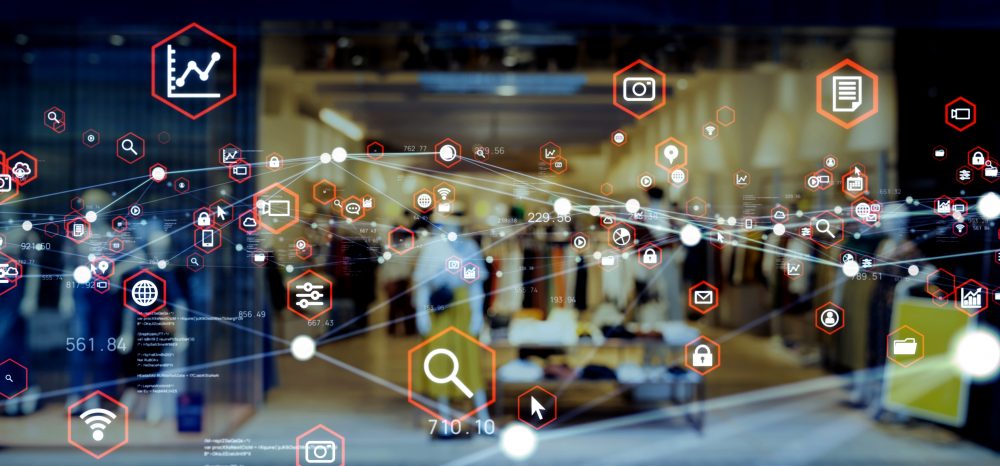Marijuana’s influence is infiltrating business categories from food to fashion, leading to evolving perceptions around the substance.
Top Trends: Real-Time Retail
When it comes to retail, the need for speed is stronger than ever.
In our ongoing tracking of trends from our Top Trends Volume 1 report, we’ve witnessed major tech innovations allowing people’s homes to remain home bases. Solutions in e-commerce, delivery services, telehealth medical care, and even robotics have helped keep the vulnerable economy in motion while offering people a sense of control from the comfort of their couch. Now, new challenges are catalyzing innovation in the retail space, leading to a trend we’re calling Real-Time Retail. Rising inflation concerns coupled with supply chain issues make it clear that there is a need for innovation that uses smart technology for an improved product and customer experience.
Faster, smarter solutions for real-time optimization
Retail is transforming one gig(abyte) at a time. We’re seeing this manifest in spaces like robotics, digitally-extended shopping experiences via NFC chips and QR codes, direct-to-avatar shopping, and automation. Through Instacart’s acquisition of Caper – offering an AI-powered smart shopping cart and counter that recognizes and instantly scans items for checkout – the brand has created two new checkout options that will virtually eliminate the human check-out experience. This year, 65% of US adults said they expect the check-out counter to disappear in the near future – a 10% increase YOY.* With product advancement, Pepsi’s Attribute Engine scans sites like Reddit, TikTok, and more for key attributes regarding flavor and design. Pepsi can craft more informed and appealing offerings at hyper-speed by using people’s real thoughts as the starting line for product development. And Spain-based food tech startup Novameat is utilizing its proprietary 3D-printing tech to bring texture-replicated meat substitutes to life.
Leveraging human experience as data input is key
Brands can no longer simply innovate to mitigate losses but are expected to invent a future that’s fully frictionless, automated, personalized, and hyper-speed (think: same-minute delivery). This creates an opportunity for a real-time feedback loop of consumer choice and preference – an instant innovation pipeline for brands. And Real-Time Retail isn’t exclusive to traditional retail brands. As the metaverse expands, experience is a selling point, and human interaction is data. All brands should be thinking of each interaction as a commerce opportunity.
- QSR game-time decisions: a QSR brand can create QR code-enabled micro-gaming experiences for each product on the menu. Use interaction data from gamers to inform product innovation and supply, and to test future metaverse extensions that will bring commerce and experience to the digital realm.
- Personalize amusement park experiences: an amusement park can collaborate with a wearable tech brand and offer data-collecting wristbands for patrons to wear during rides in exchange for discounted tickets as a reward for their consent. Leverage this data to determine each ride’s thrill-level and emotional experience, and apply insights to future planning, marketing, and communications.
*Source: Horizon Media, Finger on the Pulse. Survey fielded 5/31/22-6/9/22, n=986




